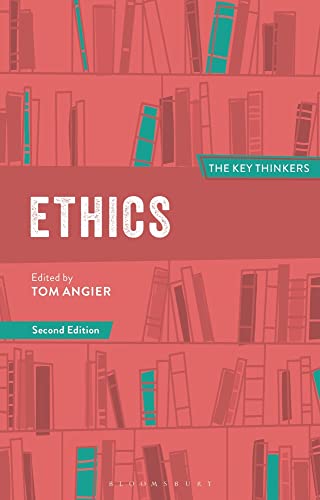About Tom Kristensen
For the Norwegian author by the same name, please see: Tom KristensenTom Aage Kristensen was born in London in United Kingdom in 1893 to Danish parents. In his early childhood the family moved back to Denmark, more specifically Copenhagen, where Kristensen grew up. Kristensen was a Danish poet, writer, and critic. He was a key figure in Danish literature in the interwar period (as well as later), and is considered one of the few Danish expressionist writers. A path towards literature was being shaped early on, as he was named after the fictional character Uncle Tom from Harriet Beecher Stowe's novel Uncle Tom's Cabin (1852), which was his mother's favorite book. In 1919 Kristensen graduated with a major in Danish. After graduating he taught English for two years whilst writing his first works. In 1920 he debuted as a poet, when Fribytterdrømme (in English: "Freebooter Dreams") was published. The year after he made his debut as a novelist with Livets Arabesk (in English: "The Arabesque of Life"). Both works are characterized as expressionistic writings with strong influences from Nietzsche's thoughts on chaos and lack of accept of the passed-on systems of belief.During the 1920's Kristensen travelled a lot within and outside of Europe. Travels to i.e. China, Japan and Spain resulted in published fictional depictions of his destinations. Despite his many travels and writings thereof, his probably best known novel takes place in his own Copenhagen as well as in some of his own personal struggles: In 1930 Hærværk (published in English in 1968 as Havoc) was published. The novel, considered by many to be Kristensen's greatest work, revolts around the life of alcoholized literary critic Ole Jastrau, whose life bears great resemblance to Tom Kristensen's own life at the time. The story depicts a self-destructive nihilistic soul determined to drink himself to death in a modern western capital. Kristensen's fascination with chaos and disaster once again shines through in his masterpiece. A few years after the death of his third wife in 1943, he withdrew from the Danish capital, and moved to the small island Thurø in 1946 where he lived until his death in 1974....
Books

There's a Dragon in My Stocking
Tom Nicoll

Collins British Butterfly Guide
Tom Tolman

Accident Repair
Tom Denton
Written in association with the imi, accident repair: vehicle bodywork covers all of the key topics you will need to understand in order to pass your assessment.

Transport Modelling in Practice
Tom van Vuren
Transport modelling is a fascinating subject, but is often a black art to those who use its results in practice.

Untitled Azi Bello Book 2 Export
Tom Chatfield

Fabulous Baker Brothers (Book3)
Tom Herbert

Stormy Weather (Export and Airside)
Linda Davies , Contributing writers: Christopher Bundy, Michael Byers, Rand Richards Cooper, Tristan Davies, Siobhan Dowd, Siri Hustvedt, Tom Miller Juvik, Jennifer Levasseur, Deepa Mehta, Karenmary Penn, Kevin Rabalais, L.M. Spencer, Lee Upton Susan Burm

Geodesy
Tom Herring

Stormy Weather
Linda Davies , Contributing writers: Christopher Bundy, Michael Byers, Rand Richards Cooper, Tristan Davies, Siobhan Dowd, Siri Hustvedt, Tom Miller Juvik, Jennifer Levasseur, Deepa Mehta, Karenmary Penn, Kevin Rabalais, L.M. Spencer, Lee Upton Susan Burm

England 2015
Tom Bradshaw

Pearl of Kuwait
Tom Paine

Power of Potential
Tom D'Eri

Ethics
Tom Angier

Born Funny
Tom McCaffrey

Legal Interpretation in Democratic States
Tom D. Campbell

Three Hundred Streets of Venice California
Tom Laichas

The Reformation of Welfare
Tom Boland

Follow Me to Hell
Tom Clavin

Paddling the Texas Coast
Tom Behrens

How Not to F*ck up Your Startup
Tom Fairey

Energy Decarbonized
Tom James
Energy decarbonized discusses the technologies that are helping to reduce green house emissions and the energy sources of the future.

Children and Media
Tom van der Voort

Follow Me to Hell
Tom Clavin

Scoochie & Skiddles
Tom Tracy

Born Funny
Tom McCaffrey

Best Loser Wins
Tom Hougaard

Pandemic Zoom
Tom Murphy

Hope
Tom Parker

Odyssey
Tom Chaffin

Marxism Missing, Missing Marxism
Tom Brass

Milo Responds
Tom Johnson

America at the Abyss
Tom Donelson

Listening Service
Tom Service

Salazar
Tom Gallagher

Heavenly Valley Passage
Tom Johnson

Stories from Spring Court
Tom Hyatt

Heirs of Flesh and Paper
Tom Tölle

50 Politics Classics
Tom Butler-Bowdon

Blanchland Blues
Tom Dell'Aringa

Titan
Tom Stein

Capitalist and the Activist
Tom Lin

Performing the Kinaidos
Tom Sapsford

Rentier
Harper Tom

Rorschach
King, Tom

Circa
Tom Ratcliffe

Be Bold
Tom Sileo

Creativity Beyond Human Imagination
Cheuk Tom

Tropical Birds
Tom Jackson

Youth Fiction and Trans Representation
Tom Sandercock
Similar books

Artist Bingo
Niki Fisher

Introduction to International Relations
Georg Sørensen

Performance and Modernity
Julia A. Walker

Opioid Epidemic in the United States
Kant Patel

Management der Dynastischen Unternehmerfamilie
Tom A. Rüsen

Hässliche Wörter
Joachim Scharloth

Primer on Nephrology
Mark Harber

Data Engineering for Smart Systems
Priyadarsi Nanda

Public Health and Beyond in Latin America and the Caribbean
Sherri L. Porcelain

Affect and the Making of the Schoolgirl
Melissa Joy Wolfe

Visualising Literacy and How to Teach It
Steve Bowkett

Sustainable Design for Renewable Processes
Mariano Martin

Biotribology
T. V. V. L. N. Rao

Head and Neck Endocrine Surgery
David Goldenberg

Brands on a Mission
Myriam Sidibe

Mozart
Jan Swafford

Historisches Codeswitching Mit Deutsch
Elvira Glaser

Drag Match
Gerrard Gethings

Key in the Lock
Beth Underdown

Chronische Schlafstörungen Bewältigen
Jana Speth

Understanding Cryptocurrency Fraud
Shaen Corbet

Fear, Hope and Survival in Xinjiang
Sarah Tynen

Mrs. Halliburton's Troubles
Henry Wood

Private Secretary
Charles Hawtrey

Green Lunch Box
Becky Alexander

Creating Your Future after a Toxic Relationship
Dee Wilkinson

Warning Shadows
Anjeana K. Hans

How D. H. Lawrence Read Herman Melville
Kevin J. Hayes

Gestaltungskompetenz
Felix Rauner

Psychology and Its Allied Disciplines
M. H. Bornstein

Replacing Fossil Fuels
William Nelson

Perceptual Development
Alan Slater

Minnesota Symposia on Child Psychology
A. D. Pick

Elements of Environmental Engineering
Kalliat T. Valsaraj

Corporate Governance in Developing and Emerging Markets
Franklin N. Ngwu

Smart Autoclave Cure of Composites
Peter R. Ciriscioli
This book describes process models for thermosetting and thermoplastic matrix composites and an expert system applicable to autoclave curing of thermosetting matrix composites.

Javanese Travels of Purwalelana
Judith E. Bosnak

U. S. Exportimport Bank
James J. Emery

Jewish World in Modern Times
Abraham J. Edelheit

Hating, Abhorring and Wishing to Destroy
Donald Moss

Military Mayhem
Raymond Horricks

Banach Limit and Applications
Gokulananda Das

Planning Health Promotion Programs
L. Kay Bartholomew Eldredge

Melmoth the Wanderer
Charles Maturin

Lightning
Chandima Gomes

Jungle Book
Rudyard Kipling

Accidental Agents
Martin Crowley

On Not Defending Poetry
Catherine Bates

The Starksboro 5
Dave Donohue
In the starksboro 5, a small group of friends, members of the sixties counterculture, move into an old farmhouse in vermont in an attempt to avoid the madness of war and create their own universe of harmony..

Gift
Alan Titchmarsh

Manhattan's Public Spaces
Ana Morcillo Pallarés

Drawing on Grief
Kate Sutton



